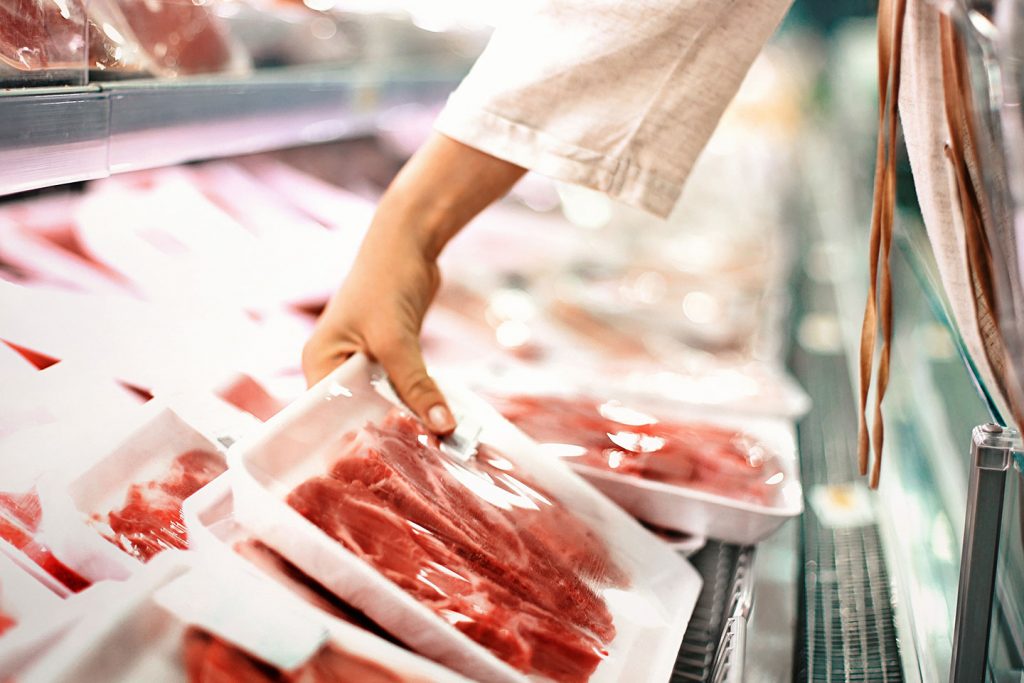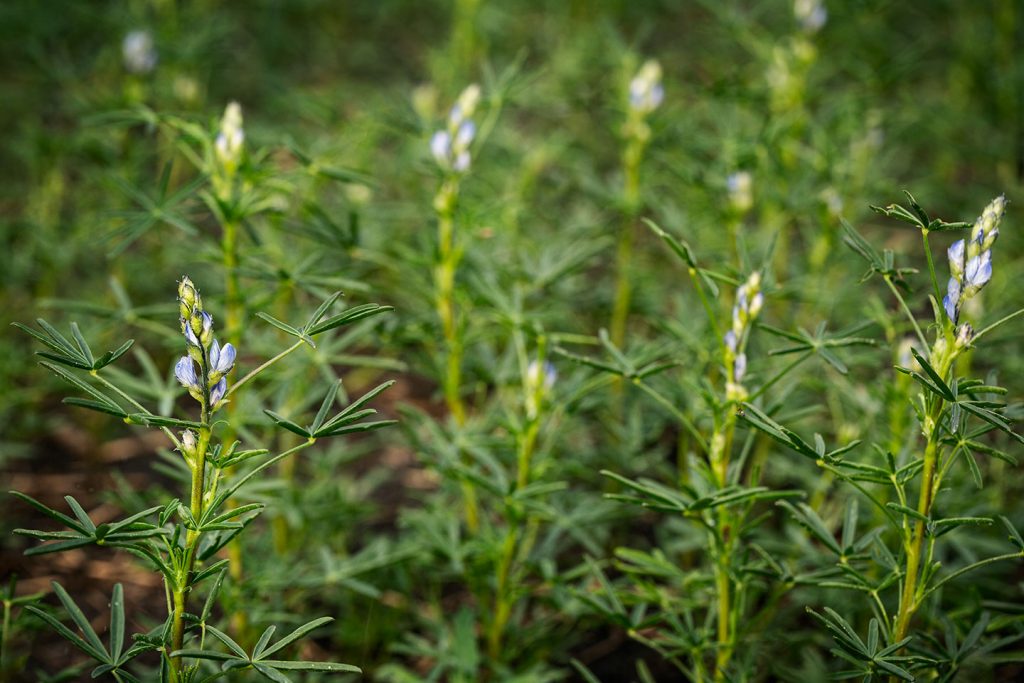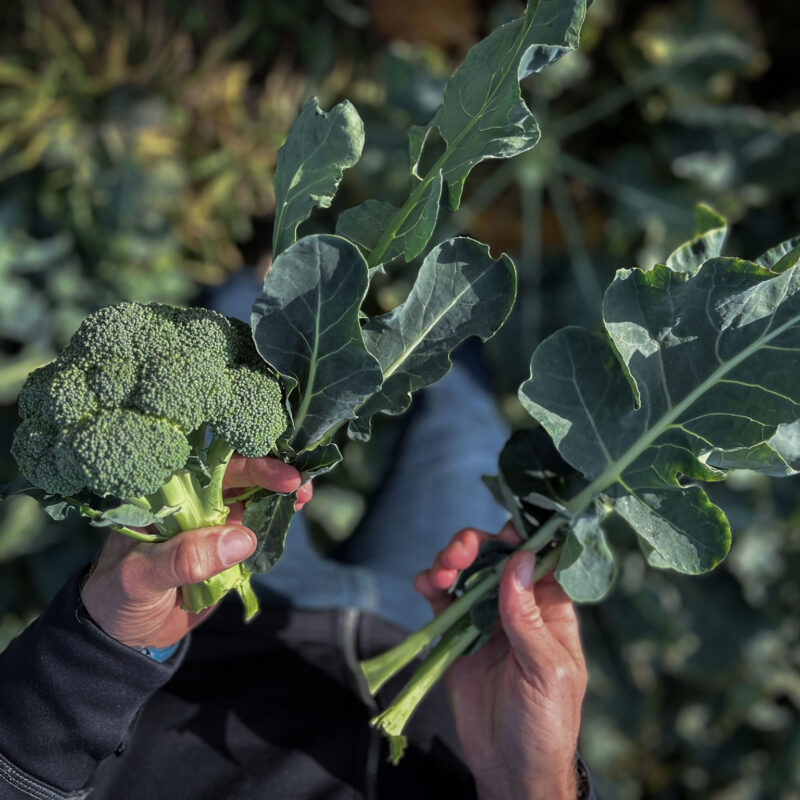Legumes Cultivation
It is well-know that humans need to eat less meat, both for the sake of health and for the planet. At the same time, humans need protein. Legumes (beans, lentils, peas) are both healthy and protein rich alternatives. Axfoundation gathered researchers, farmers, food processers and chefs at Torsåker farm, Axfoundation’s center for future food, to jointly find, cultivate and use protein crops that can grow in Sweden.

We have to reduce our meat consumption. At the same time, we need protein. (Photo: iStock.com/Gilaxia)
The Issues & Solutions
The consumption of meat must be reduced if the climate targets are to be met. Meat production contributes to greenhouse emissions both through methane from ruminants (with several stomachs) and from the land used for livestock production. About 70 % of the world’s arable land is used for growing animal feed, but the livestock production only contributes to 18% of the global calorie production and 25 % of the global protein consumption.

Sweet lupine, also known as the Nordic soya bean, is one example of a healthy and protein-rich legume that can be grown in Sweden.
Legumes are healthy and protein rich alternatives, which also have a number of positive effects on the climate. Legumes have the advantage of being able to fix nitrogen directly from the air, which means less need for added nitrogen, which lessens the need for added nitrogen. This is good for the climate due to nitrous oxide being a potent greenhouse gas that is released from arable land that has been fertilized with nitrogen. The production of mineral fertilizers is also very energy intensive. It is also favorable for the seas, since surplus nutrients such as nitrogen and phosphorus leak into the watercourses and then continue into the seas where they contribute to eutrophication, algae blooms, hypoxia and dead seabeds.
Feed & food per hectare arable land
In total, 2.8 kg of crops fit for human consumption, such as cereals and legumes, are required to produce 1 kg of boneless meat from ruminants (e.g. cows). An advantage of ruminants is that they largely eat feed that humans cannot eat, however, plant protein fit for human consumption is still used. The biggest disadvantage of meat from ruminants is the high greenhouse gas (GHG) emissions that the animals emit.
In comparison, 3.2 kg of crops fit for human consumption are required to produce 1 kg of boneless meat from monogastric animals (e.g. pigs). These animals emit significantly less GHG but require a greater amount of plant protein fit for human consumption than they contribute to in terms of animal protein.
It would be possible to get substantially more food from each hectare of arable land if the crop became food instead of feed. Hence, it is not necessarily true that there will not be enough food for a growing population in the future. We must, however, eat differently.
Open countryside & imported food
Sweden needs grazing cows to keep the countryside open and maintain the biodiversity. There are many advantages with meat from grass fed and pasture-raised animals; they convert plant protein unfit for humans to animal protein that humans can consume, and make use of grassland that isn’t ploughed, sowed, fertilized or cultivated. But far from all Swedish meat comes from natural grazing. Furthermore, almost half of all the meat is imported and from animals that have been fed cereals and soy, food that could have been used for human consumption. Sweden’s demand for imported meat indirectly leads to the use of fertile land in low-income countries going to animal feed instead of food that could have been consumed locally.
Today, there is an increase in the growth of meat and dairy substitutes, which is positive. However, most of these products are made from soy; a good crop from a nutritional perspective, but often grown on the other side of the world and in a manner which harms both nature and the people involved in the production.
Limited Swedish legume cultivation
In 2020, only 1% of the Swedish arable land was used for legume cultivation and 80% of the harvest ended up as animal feed.
According to the EAT-Lancet report published in January 2019, Swedes intake of legumes need to tenfold to keep both climate and health in check. The most optimal would of course be to produce more of the crops we need here at home. There are several promising candidates, such as sweet lupine, field peas, broad beans and grey peas to name just a few.
An obstacle to increased domestic legume production is the lack of a functioning infrastructure for processing legumes, such as food-approved facilities for cleaning, peeling, processing and packaging. Today, there are numerous farmers in Sweden who want to grow legumes, and there are consumers who want to buy – but several links in the chain are still missing. Very few consumers are willing to soak and cook legumes themselves, which is required for us to be able to eat them.
Our Work
Axfoundation, together with different actors, has made efforts to spread the interest in Swedish-produced legumes. An important success factor was to create easily accessible products that the consumer can easily incorporate into their everyday cooking. At Torsåker farm, Axfoundation gathered researchers, farmers, food processors and chefs to together find, grow and develop protein crops that can grow in Sweden. Working together in innovative collaborations, possibilities were explored to, among other things, produce food-safe flours on legumes and several other products that suit the modern consumer.
Results
Axfoundation has, for several years, tested cultivating sweet lupine, broad beans and grey peas at Torsåker farm. Lessons learned from these trials have resulted in new projects with legumes, both as feed and food. The test-grown legumes have been evaluated with regard to taste and nutritional composition, which resulted in, among other things, the Swedish Legume Mince – an idea that was born on Torsåker Farm already in 2017, developed into a finished product and in 2020 handed over to Svenska Färsodlarna.
- Axfoundation tested cultivating sweet lupine of the boregine variety at Torsåker farm during the 2017 growing season. There was at that time limited knowledge about how best to grow lupines in Sweden. Many thought that it wouldn’t actually be possible in Uppland’s clay soil, however we still tried the crop in a number of different growing systems and the results exceeded expectations. The yield was 3.7 metric tonnes per hectare and the beans had a high protein content of about 36 %.
- Axfoundation identified and tested two more legumes, apart from the sweet lupine, that are especially interesting as food; broad beans and grey peas. The broad bean is today mainly used as animal feed, but is closely related to the fava bean which is an excellent food product. The grey pea has historically been a staple for northerners, but has been phased out as the yellow and green pea was refined and gave better yields.
- During 2017 and 2018 Axfoundation has made land available at Torsåker farm for the project MegaLegumes with the aim of evaluating Swedish protein crops as industrial raw materials. RISE, Hushållningssällskapet Väst, Nordisk Råvara AB, Lantmännen Cerealia AB, Veggi AB and So Fungy Ekonomisk förening were behind the project. The aim of the project was to enable Swedish agriculture to produce plant-based protein from lupine and broad bean, in the long haul and on a large-scale, for human consumption. One of the four experimental test sites was at Torsåker, the others were located at Lyse, Umeå and Skepparslöv.
- Today, Swedish legumes are used as an ingredient in several products to contribute to flavor, texture, and nutritional value. For example, the Smart Swedish Seafood project has led to the creation of fish cakes made with bream and fava beans.




































